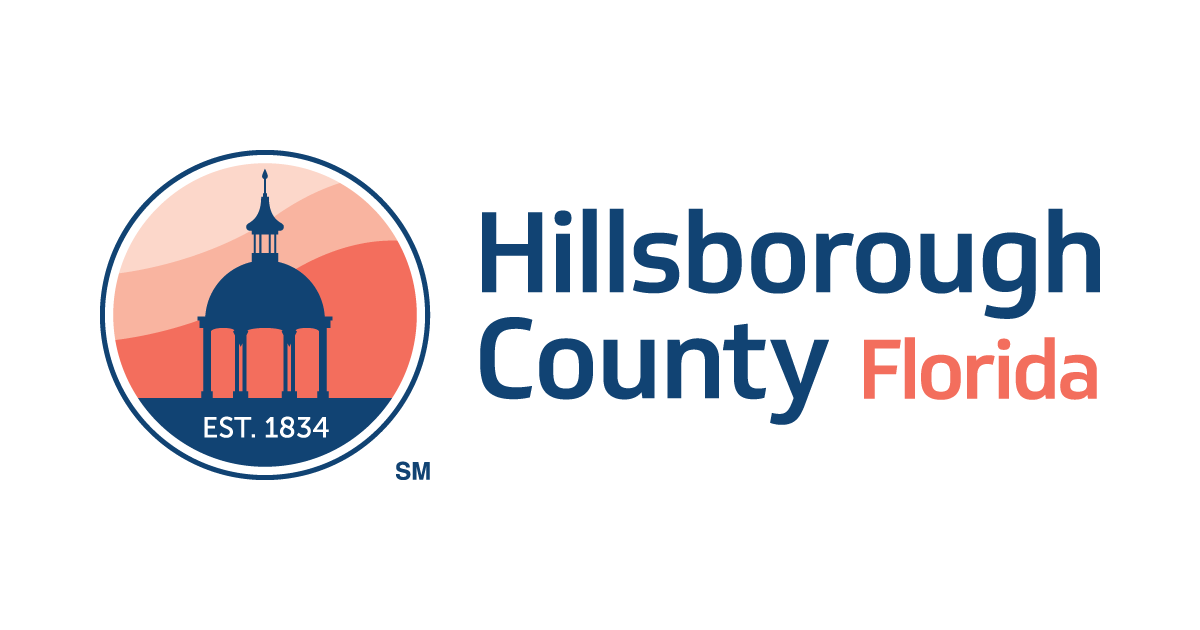Driving Operational Efficiency and Customer Engagement through Strategic Communication and Service Center Consolidation – Case Study – Hillsborough County, Florida
Hillsborough County, Florida, faced a critical challenge: improving its operational efficiency while effectively communicating significant changes to its constituents. With plans to consolidate various functions within its County Center, particularly focusing on the 19th-floor permit intake process, the County sought not only to enhance customer service and streamline operations but also to ensure that these changes were clearly communicated to the public. The goal was to transform the existing permit intake department into a high-performing one-stop service center, with a robust communication strategy at the core of this transformation. This strategy was designed to inform, engage, and build trust with constituents, ensuring a smooth transition and broad public support for the new service model.
Project Overview
Stegmeier Consulting Group (SCG) was engaged to assist Hillsborough County in the consolidation and improvement of its operations. The project’s success hinged on several key objectives:
- Stakeholder Engagement: Engaging a broad range of stakeholders, including the Chamber of Commerce, Builders Association, government officials, and community groups, was critical to ensuring that the project’s outcomes would meet the diverse needs of the community. SCG prioritized open communication channels and transparency throughout the planning process, ensuring that stakeholders were not only informed but actively involved in shaping the future service center.
- Physical Layout Analysis: A thorough analysis of the existing physical layout of the permit intake department was essential. SCG focused on understanding the current customer flow and experience, identifying pain points that needed addressing, and recognizing opportunities for improvement. This analysis was crucial for designing a space that would facilitate better interactions between staff and constituents and streamline the permit intake process.
- Recommendations for Improvement: SCG was tasked with developing actionable, data-driven recommendations for the redesign and expansion of the permit intake area. These recommendations needed to be both practical and forward-thinking, addressing immediate challenges while also anticipating future needs as the County continues to grow and evolve.
- Prototyping and Stakeholder Buy-In: SCG understood that successful change management required more than just strategic planning; it required the buy-in of those who would be impacted by the changes. By working with their selected interior design firm to develop a mockup of the proposed design, SCG was able to provide stakeholders with a tangible representation of the future service center. This not only facilitated better understanding and support but also allowed for iterative feedback that refined the final design.
- Communication Strategy: A significant part of the project involved developing a comprehensive communication strategy aimed at solving the problem of effectively communicating the upcoming changes to constituents. Hillsborough County needed to ensure that the public was well-informed about the transition to the one-stop service center, the benefits it would bring, and how it would impact their interactions with the County. This strategy included tailored messaging for different audience segments, detailed timelines for communication rollouts, and contingency plans for addressing potential concerns or misunderstandings.
- Email Delivery Platform: To support the ongoing communication needs of the County, SCG implemented an email delivery platform. This platform was designed to be user-friendly, allowing County staff to easily send updates, notifications, and other important information to constituents. SCG also created a customizable email template that could be adapted for various types of communications, ensuring consistency in messaging and branding while reducing the time and effort required to maintain regular communication with the public.
Project Execution
The project execution was multi-faceted, involving several key activities and deliverables:
- Stakeholder Meeting: SCG facilitated a 1.5 to 2-hour meeting with key stakeholders, which served as the cornerstone of the project’s collaborative approach. During this meeting, SCG presented the project’s goals, timeline, and expected outcomes. Stakeholders were encouraged to share their insights, concerns, and expectations, which were carefully considered and integrated into the project plan. This meeting set the tone for ongoing collaboration and ensured that all parties were aligned with the project’s objectives from the outset.
- Onsite Assessment: SCG deployed two of its consultants to conduct a comprehensive onsite assessment of the current permit intake operations. This assessment involved observing daily operations, interacting with staff and customers, and conducting in-depth interviews with key personnel. The consultants focused on several critical areas:
- Process Analysis: SCG analyzed the processes associated with various permit requests, with a particular focus on identifying and addressing any conflicting steps that could hinder the efficiency of the service center. This analysis was aimed at creating a more streamlined and cohesive process that would minimize delays and reduce the risk of errors.
- Bottleneck Identification: SCG worked to identify specific bottlenecks within the existing processes where customer requests were delayed or came to unnecessary halts prior to completion. This involved mapping out the entire customer journey, from the initial request to the final approval, and pinpointing areas where the process could be expedited or simplified.
- Workflow Mapping Review: The consultants reviewed the results of workflow mapping that had been conducted internally by County staff. SCG then extended this mapping to include other critical workflows that were not previously documented. This comprehensive approach ensured that all aspects of the service center’s operations were accounted for and optimized.
- Staff Assessment: SCG assessed which work groups or staff members would be most appropriate to locate within the new center. This involved understanding the roles and responsibilities of different teams, as well as how they interacted with other departments or individuals located outside the service center. The goal was to create a cohesive, well-integrated team that could effectively serve the needs of the public.
- Cultural Assessment: Recognizing that operational changes can be challenging for staff, SCG also conducted a cultural assessment to identify any issues that might create barriers to the success of the new service center. This included examining the existing workplace culture, communication patterns, and staff attitudes toward change. SCG provided recommendations for fostering a positive, adaptable culture that would support the successful implementation of the new service model.
- Data Analysis and Benchmarking: After completing the onsite assessment, SCG returned to analyze the data collected. This analysis involved benchmarking Hillsborough County’s operations against best practices observed in other customer service centers, both within the public and private sectors. SCG’s recommendations were informed by this benchmarking, ensuring that they were both innovative and grounded in proven strategies that had been successful in similar contexts.
Deliverables
- Comprehensive Recommendations: SCG developed a detailed set of recommendations aimed at improving both the physical layout and the operational efficiency of the permit intake center. These recommendations were designed to support the creation of a one-stop service center that would streamline processes, enhance the overall customer experience, and provide a foundation for continuous improvement. The recommendations addressed specific pain points identified during the onsite assessment and were aligned with best practices in customer service.
- Communication Strategy: The communication strategy developed by SCG was multifaceted, addressing the need for clear, consistent, and timely communication with constituents about the upcoming changes. The strategy included:
- Audience Segmentation: Tailoring messages for different audience groups, such as homeowners, businesses, and developers, to ensure relevance and clarity.
- Messaging Development: Crafting messages that explained the benefits of the new service center, the timeline for the transition, and how constituents could access services during and after the transition.
- Communication Channels: Identifying the most effective channels for reaching different audiences, including email, social media, public meetings, and the County’s website.
- Crisis Communication Plan: Preparing for potential issues or public concerns that could arise during the transition and ensuring that the County was equipped to respond quickly and effectively.
- Email Delivery Platform: SCG’s implementation of an email delivery platform was a critical component of the communication strategy. This platform allowed the County to maintain regular contact with constituents, providing updates and important information in a timely manner. The customizable email template created by SCG ensured that all communications were consistent in style and tone, reinforcing the County’s brand and message. The platform also included analytics features, allowing County staff to track the effectiveness of their communications and make data-driven adjustments as needed.
- Prototype Development: To maintain stakeholder engagement and manage expectations, SCG worked with the County’s design firm to develop a physical prototype or mockup of the redesigned service center. This prototype was instrumental in helping stakeholders visualize the proposed changes and provided a tangible tool for further discussion and refinement. By involving stakeholders in this process, SCG ensured that the final design reflected the needs and preferences of those who would be most affected by the changes.
Impact and Long-Term Benefits
The successful execution of this project resulted in a clear, actionable plan for transforming Hillsborough County’s permit intake process into a high-performing one-stop service center. The comprehensive recommendations provided by SCG laid the groundwork for substantial improvements in both customer service and operational efficiency.
Engagement with stakeholders throughout the project ensured broad support for the changes, which was crucial for the successful implementation of the new service center model. Moreover, the communication strategy and email delivery platform developed by SCG positioned Hillsborough County to maintain clear, consistent, and effective communication with its constituents, thereby ensuring transparency and fostering public trust.
Moving forward, Hillsborough County is equipped with the tools and strategies necessary to continue refining its operations and enhancing service delivery. The foundation established by SCG’s recommendations will support the County’s ongoing efforts to remain responsive to constituent needs, while setting a benchmark for operational excellence within the public sector.
SCG’s Approach to Communication Strategy
Develop a communication plan & schedule for your change initiative
Ready to begin your change transformation? Don’t wing it when it comes to communication. Planning is critical. Rely on our expertise. Contact us through the form below and we’ll be in touch shortly.




